Schleswig
First edition of interesting town
Detail
Date of first edition: 1588
Date of this edition: 1588
Dimensions (not including margins): 33,3 x 48,3 cm
Dimensions (including margins): 40 x 53,2 cm
Condition: Excellent. A very nice impression with full contemporary color on a bright sheet with a tiny hole in the cartouche at bottom center, marginal age-soiling. Centre fold as published. Wide margins.
Condition rating: A
Verso: text in Latin
Map reference: Van der Krogt, IV, 2-2, 3912; Taschen, Br. Hog., p. 310
From: Civitatis Urbis Terrarum, Urbium Praecipuarum Totius Mundi, Liber Quartus, 1588; Van der Krogt IV, 2-2, 41:1-3; first edition 1588: page ’31’ on verso and last line ‘niam….soluisse’
In stock
Schleswig commented by Braun
“Long ago Schleswig was the capital of the whole territory of Cimbria, a big city and wealthy because of its important commercial activities, but now it has lost its former splendour because of the misfortune brought upon it by God. It has a harbour, which is ideally suited to trade. For formerly the trade goods were brought from the Netherlands, England, France and Spain to the Eider Estuary, and then on the Treene to Hollingstedt and from there very easily to Schleswig, and further over the Baltic Sea to the Kingdom of Denmark, to Norway, also Livonia, Russia, Prussia and other German provinces on the Belt.”
Translation of cartouche text: Gottorp. The castle of Gottorp, which came into the possession of the Dukes of Holstein only recently, got its name from the powerful Goths. And Adolph is already fortifying it in no small measure, for this illustrious prince is fond of staying here. Schleswig. It faces the plain between the Scots and the Angles which, although it is small, borders on two seas, and it is said that the sea of the Cimbrian Peninsula is not far from the River Schlei with its many ships. The isthmus is girded here by what is called the rampart of the Danes, a work built by Godfred. And we call this town Schleswig because it is built on a curved inlet of the sea. It was once a great city, with a friendly harbour that received goods of all kinds that the waves of the sea carried here. But it has declined to such an extent that it no longer seeks to be called a city, but only a small town. From the book of the Muses of that generous and distinguished gentleman D. Heinrich Rantzau, Cologne 1584, with imperial privilege.
Taschen on Schleswig
The ducal coat of arms and the arms of the city of Schleswig at the corners of an equilateral triangle draw our attention down to the little church of Hedeby in the foreground, and thus to the origin of Schleswig and the castle of Gottorp, namely the old commercial metropolis of Haithabu. After its destruction in 1066, its place was taken by Schleswig. The moated castle, residence of the Dukes of Schleswig-Holstein-Gottorp, developed out of a fortress on the Danish frontier wall, the Danewerk (K). The view across the Schlei in cavalier perspective, with north at the top, shows the city overlooked by the tower of St Michael (C). The cathedral of St Peter (D) was begun in 1134 and completed in the 16th century. To the right of it is the former collegiate church of the 13th-century Franciscan monastery, which was converted into a town hall (G) after the Reformation. At this time Schleswig had already lost its preeminent position in trade to Lübeck.
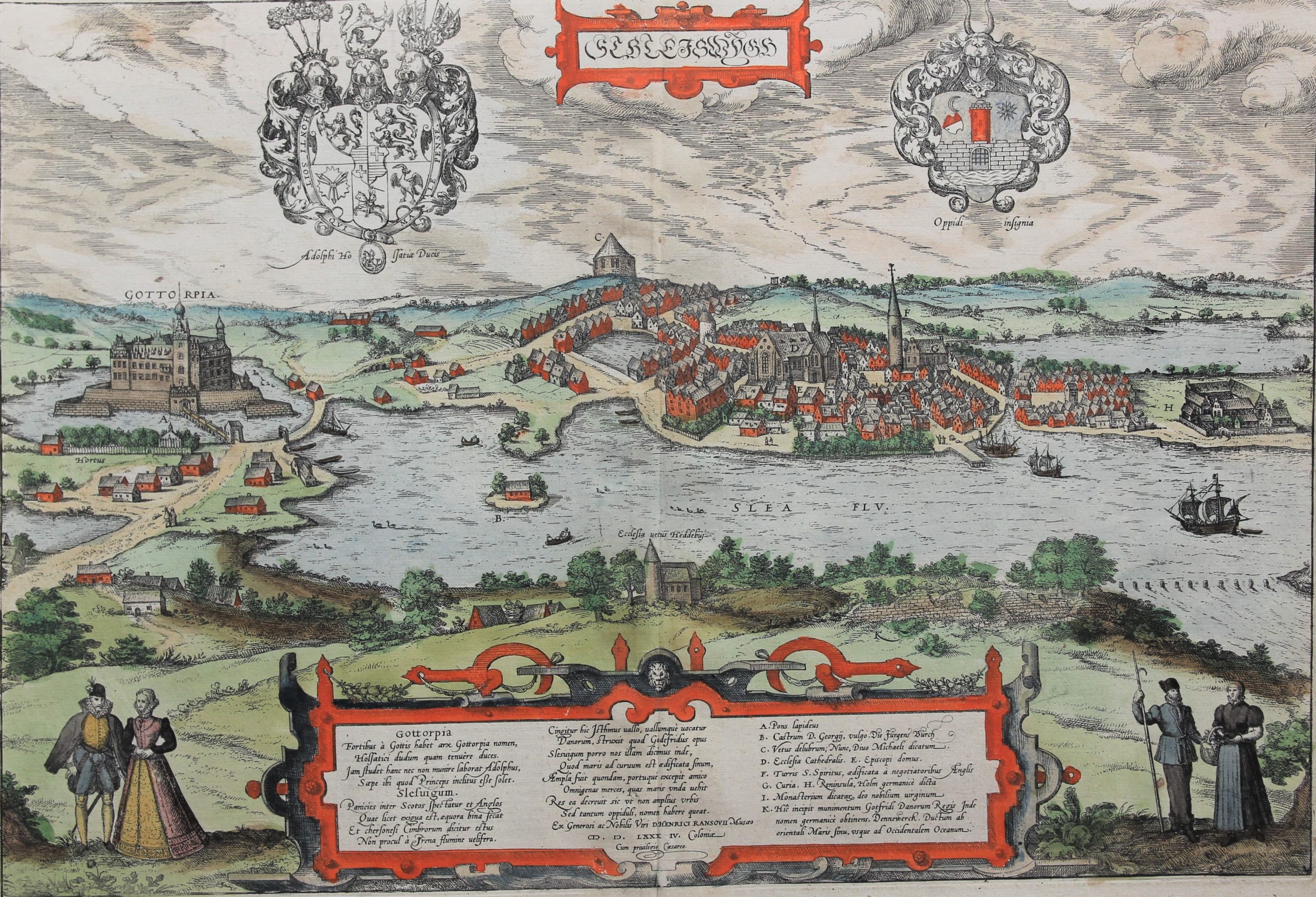
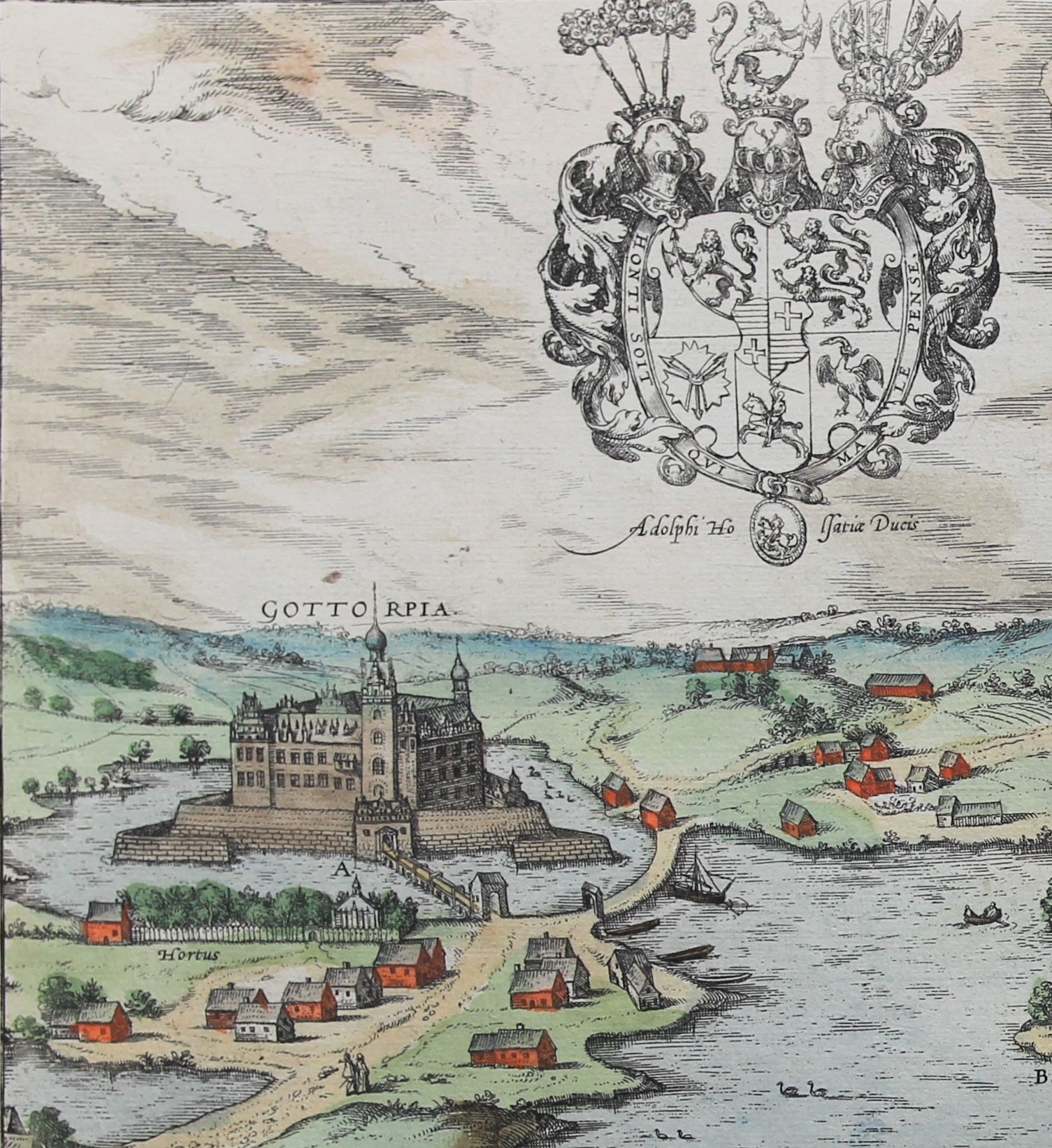
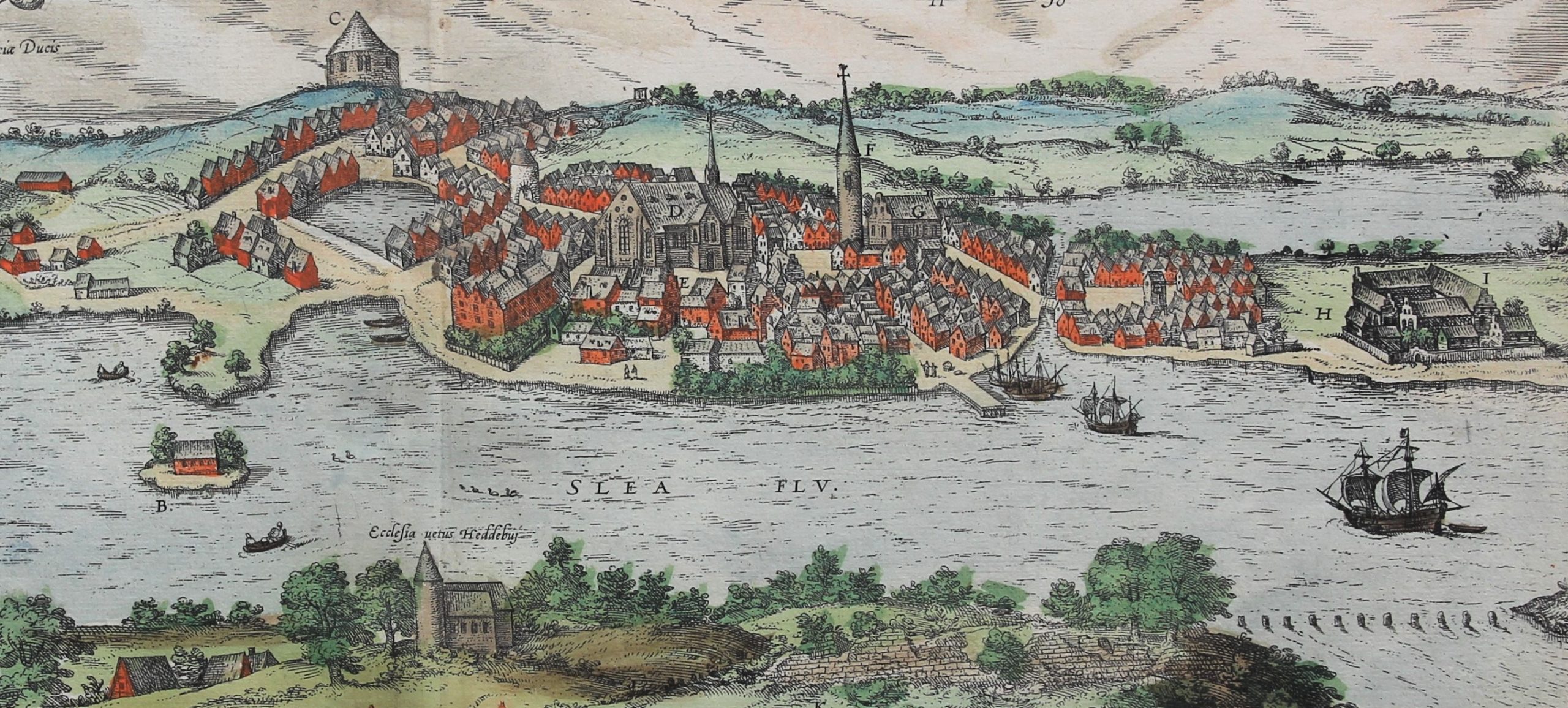
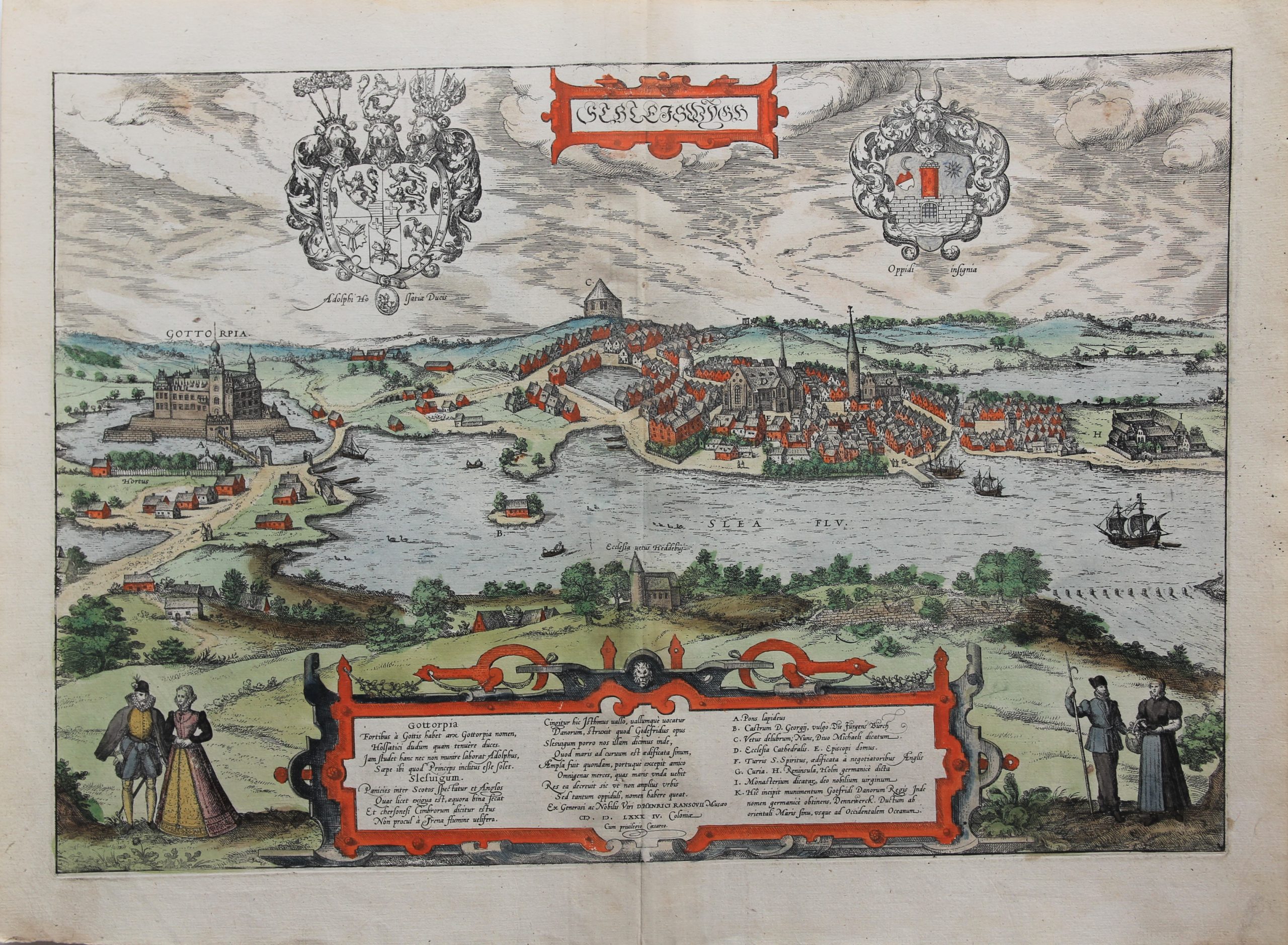
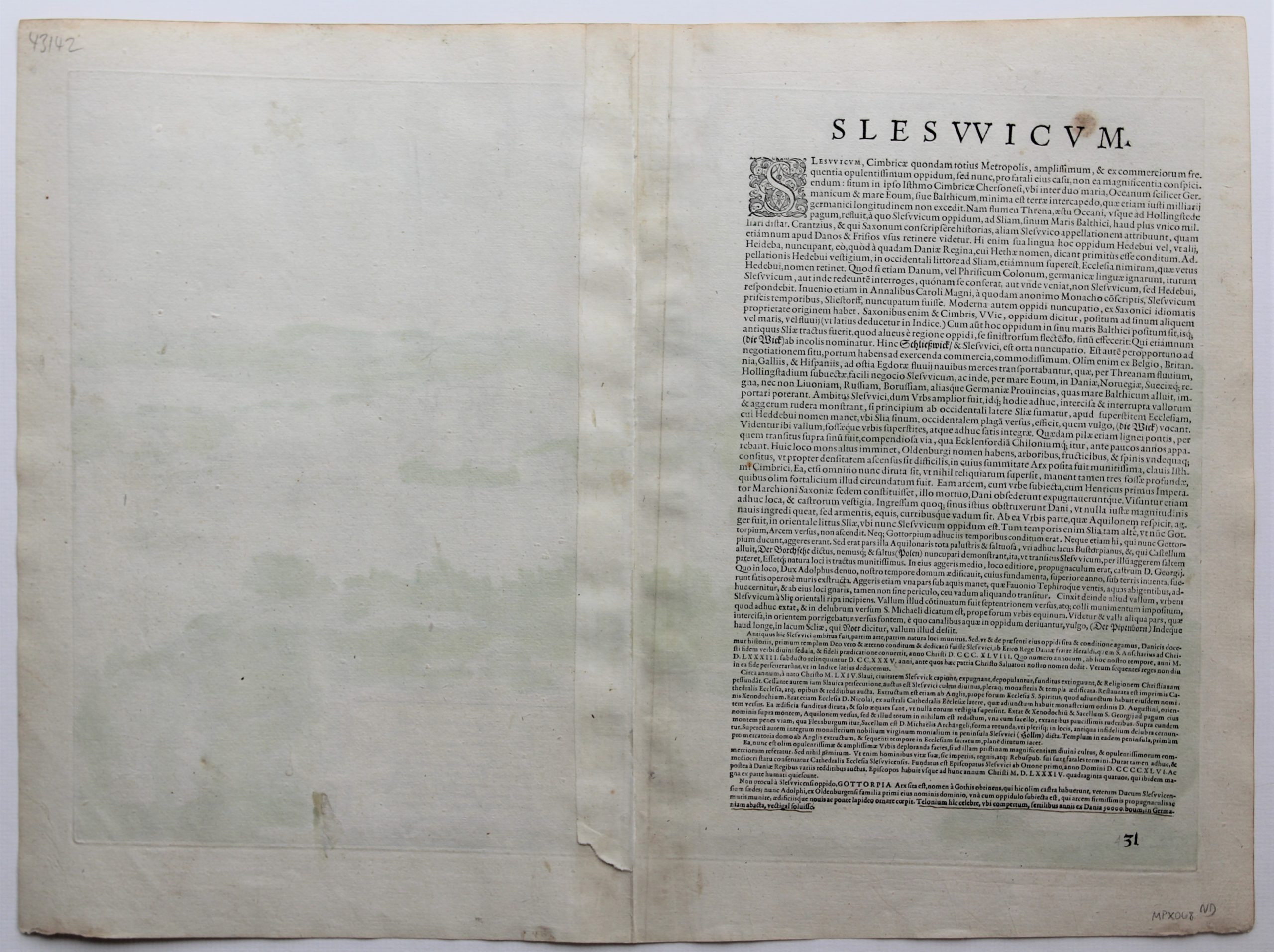
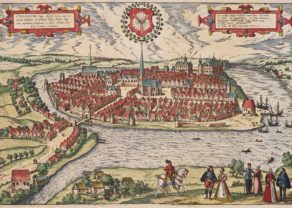
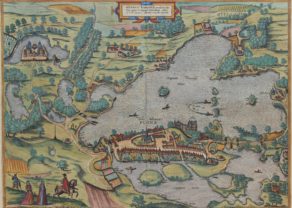
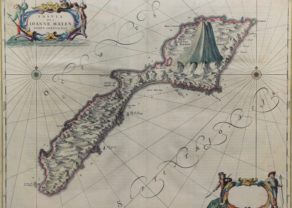
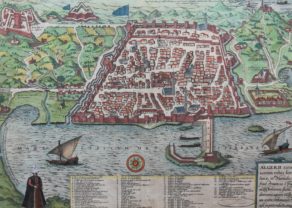
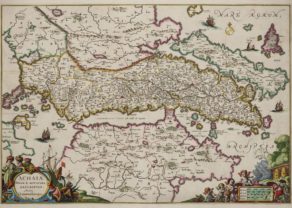
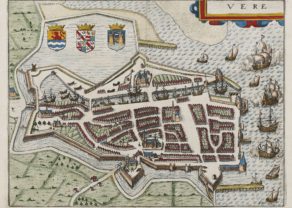
Braun and Hogenberg
Braun & Hogenberg’s Civitates Orbis Terrarum or “Cities of the World” was published between 1572 and 1617. Within the six volumes, 531 towns and cities were depicted on 363 plates, providing the reader with the pleasures of travel without the attendant discomforts. Braun wrote in the preface to the third book, “What could be more pleasant than, in one’s own home far from all danger, to gaze in these books at the universal form of the earth . . . adorned with the splendor of cities and fortresses and, by looking at pictures and reading the texts accompanying them, to acquire knowledge which could scarcely be had but by long and difficult journeys?” Braun and Hogenberg incorporated an astonishing wealth of information into each scene beyond the city layout and important buildings. The plates provide an impression of the economy and prominent occupations, and illustrate local costumes, manners and customs.
History of the city
The Viking settlement of Hedeby, located south of the modern town, was first mentioned in 804. It was a powerful settlement in the Baltic region, dominating the area for more than 200 years. In 1050, following several destructions, the population was moved to the opposite shore of the Schlei, becoming the city of Schleswig. In 1066 Hedeby was finally destroyed, and Schleswig remained as a part of the Danish kingdom.
In 1544, Gottorf Castle became the residence of the local rulers. The dukes of Gottorf were vassals of the Danish kings and ruled over much of present-day Schleswig-Holstein. In 1721, when the Great Northern War ended, the dukes of Gottorf lost their power and their land became Danish crown land. After the Second Schleswig War (1864), Schleswig was annexed by the Kingdom of Prussia.